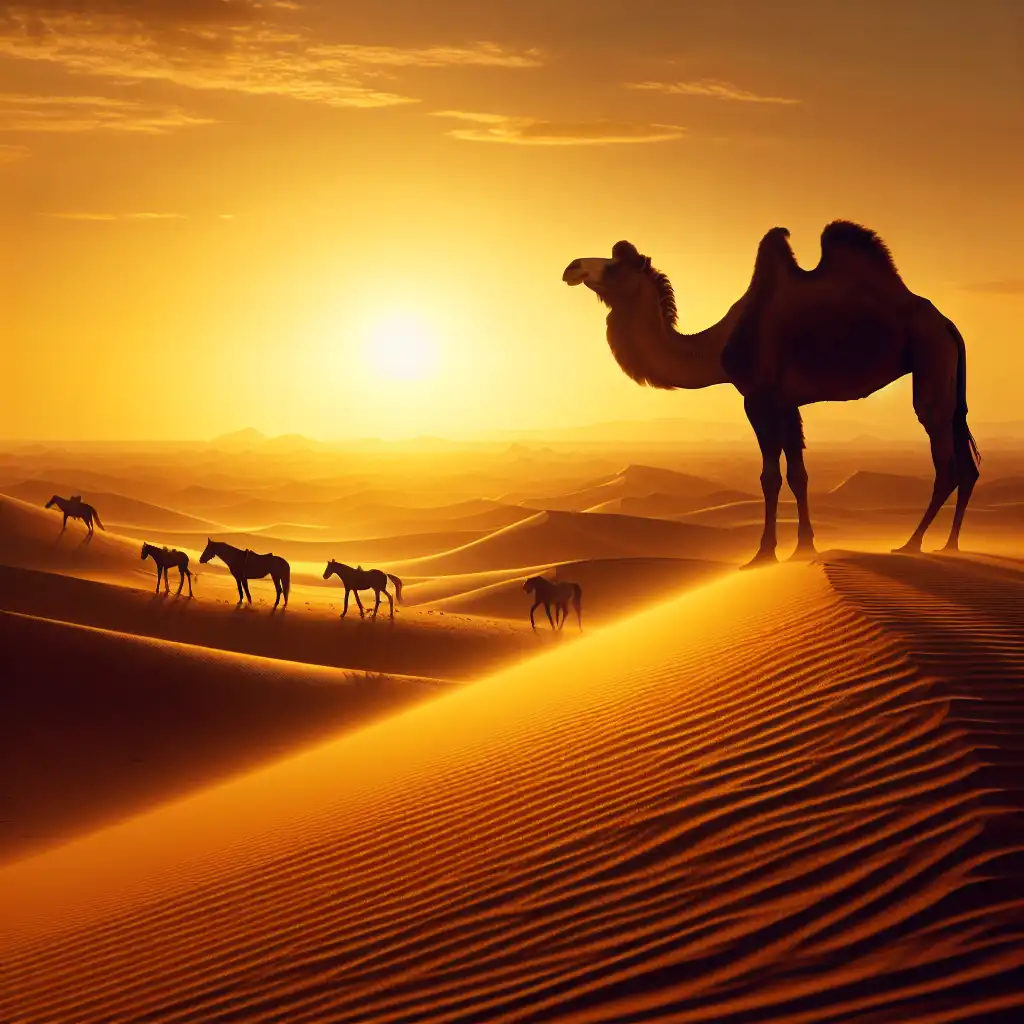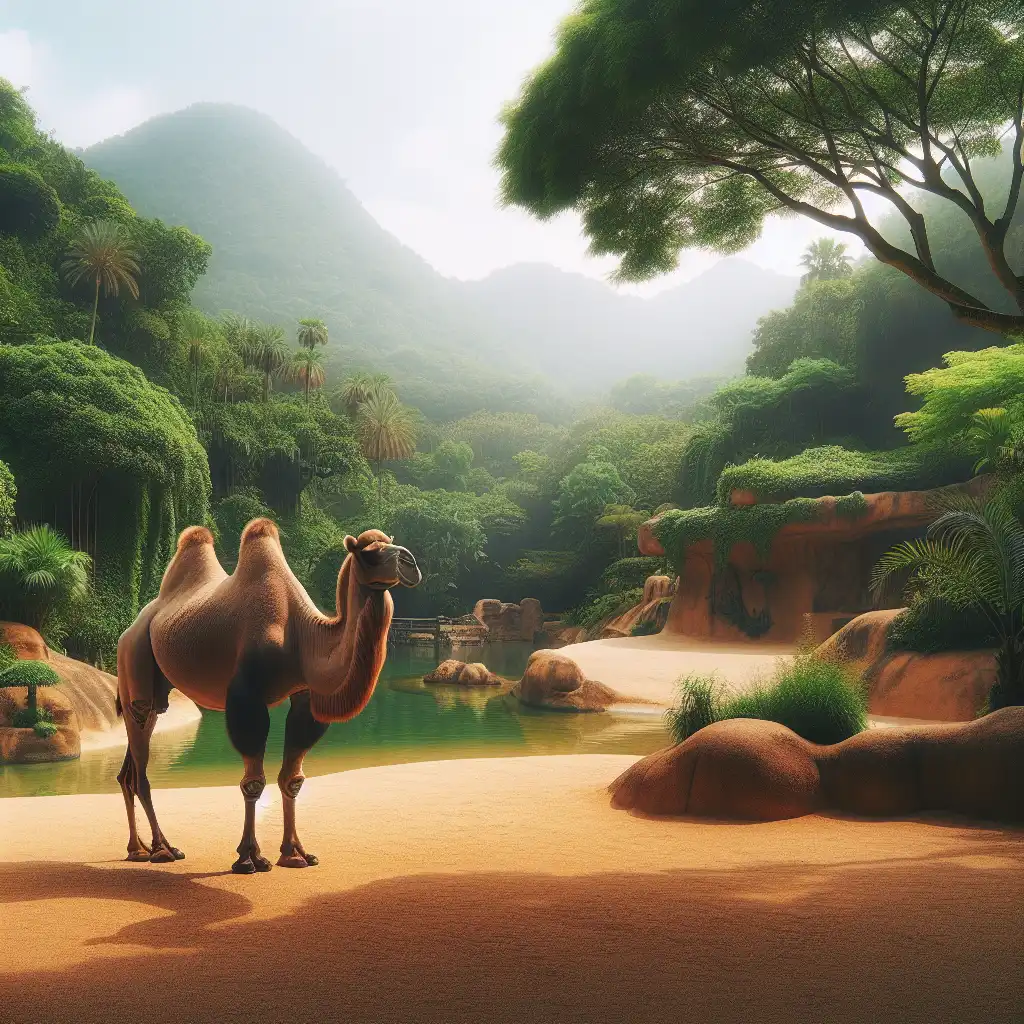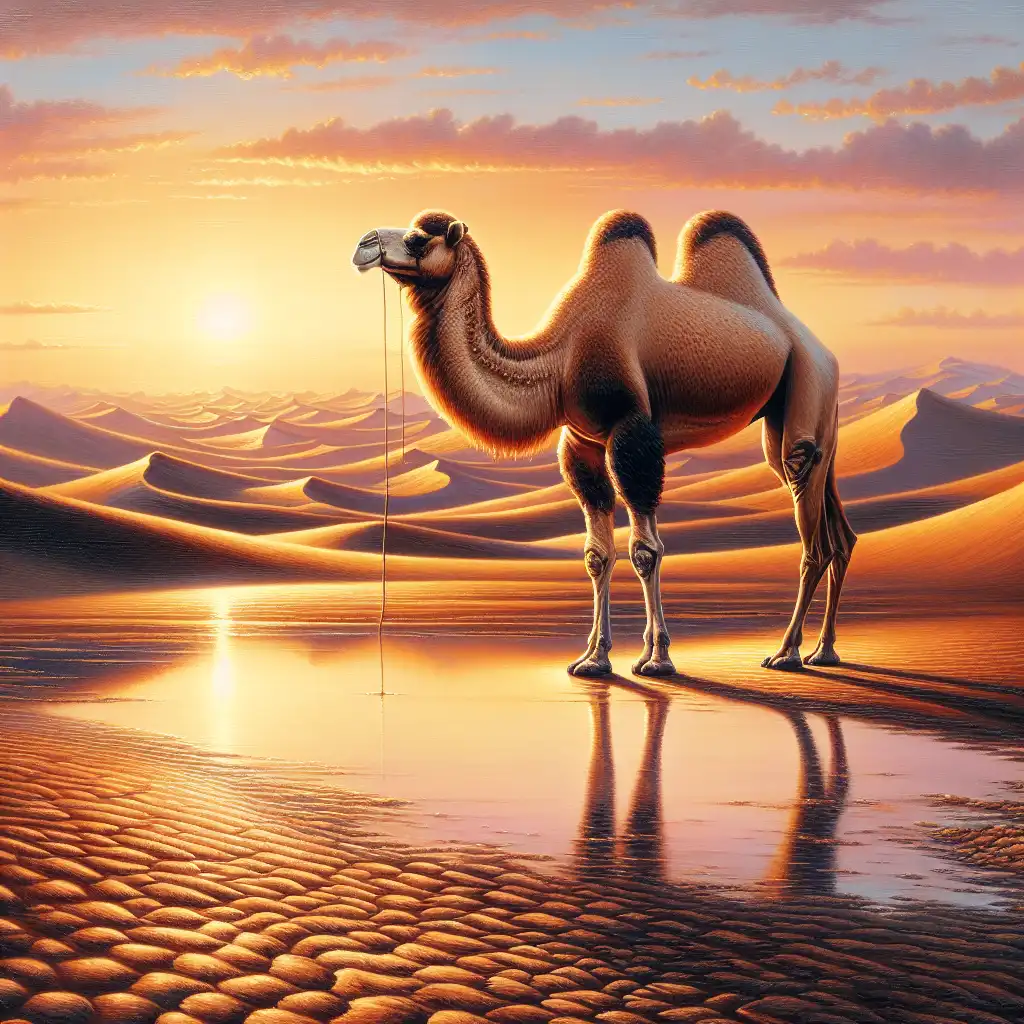
Dromedary
Desert Adaptation
Dromedaries are adapted to desert life, a context to mention when discussing survival in harsh conditions.  Unlike horses, dromedaries can survive for days without water.
Unlike horses, dromedaries can survive for days without water.
Not Bactrian
Don't confuse dromedaries with Bactrian camels, which have two humps instead of one.  I saw a dromedary at the zoo, not to be mistaken with the two-humped Bactrian camel.
I saw a dromedary at the zoo, not to be mistaken with the two-humped Bactrian camel.
Symbol of Arabia
Dromedaries are often associated with Arabian culture and imagery.  The dromedary in the painting evoked the feel of an Arabian desert.
The dromedary in the painting evoked the feel of an Arabian desert.